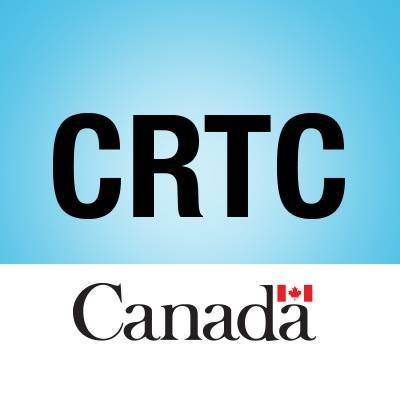Telecommunications plays a vital role in Canada’s economy and society. Nowadays, telecom services are done through different media such as telephone, radio, television, and the internet. The Canadian Telecommunications Act serves to regulate such services and the entities that provide them.
What is the Telecommunications Act of Canada?
Canada’s Telecommunications Act – also called Telecom Act – is the primary legislation for regulating the telecommunications industry. The Telecom Act repealed The Canadian Railway Act of 1906 when it was enacted in 1993.
Through this law, several developments on regulation of the telecommunications industry were made possible:
- Established the Canadian Telecommunications Policy
- Defined what telecommunications services are subject to government regulation
- Defined the powers of the Canadian Radio-television and Telecommunications Commission (CRTC) regarding the regulation of telecommunication services
- Outlines the Canadian ownership and control requirement for telecommunication carriers
Application (section 4)
The Act does not apply to any “broadcasting undertaking” within Canada. This means that the industries covered by the Telecommunications Act and the Broadcasting Act are independent of each other.
For example, common law dictates that Internet Service Providers, or ISPs, do not engage in a “broadcasting undertaking”. It then follows that ISPs are governed by the Telecommunications Act, not the Broadcasting Act.
In addition, the Act does not apply to “digital news intermediary” and “news content,” which are governed by Canada’s Online News Act.
Find out more about the Online News Act and the CRTC’s plan for its implementation:
Have you heard of C-18 (the Online News Act)?
— CRTCeng (@CRTCeng) August 24, 2023
The CRTC has shared its plan on what’s happening and when!https://t.co/nlFizbVzOb pic.twitter.com/vcU2KpzuI5
To know more about the Online News Act and the Telecommunications Act, consult with a telecommunications lawyer. Carriers from Ottawa and Toronto can contact any of the Lexpert-Ranked best telecommunications lawyers in Ontario.
Eligibility (section 16)
If your new media company engages in services related to telecommunications, certain eligibility provided by the Act must be followed.
To be eligible to operate as a telecommunication common carrier in Canada, the Act requires that:
- The corporation must be Canadian-owned and controlled, by being incorporated or continued under the federal or provincial law.
- 80% of the board of directors of the telecom corporation must be Canadians.
- 80% of the voting shares of the telecom corporation must be owned by Canadians.
For more details on ownership and control for telecommunication companies, consult a lawyer on the Canadian Telecommunications Common Carrier Ownership and Control Regulations.
What is the purpose of Canada’s Telecommunications Act?
The purpose of the Telecommunications Act of Canada is specifically laid out in the Canadian Telecommunications Policy (section 7).
The Act ensures that:
- Services offered by telecom carriers are reliable and of good quality
- Charges and rates for the carriers’ services are affordable
- Privacy of all Canadians are protected
- Canadian media’s efficiency and competitiveness are enhanced
Who regulates telecommunications in Canada?

The regulation of telecommunications in Canada falls under the CRTC, which includes the administration of the Telecommunications Act.
This is in addition to the Innovation, Science and Economic Development Canada, which governs the technical aspects of telecommunications in Canada.
As CRTC exercises its powers and duties imposed by the Act, it is compelled to do so within the perspective of the Canadian Telecommunications Policy.
Below are some of the powers of the CRTC which your company must be aware of, when operating as telecommunication common carrier in Canada.
Rates (section 27)
The Telecom Act mandates that CRTC regulates the rates and charges by a carrier.
The CRTC does this through:
- Approval of rates and tariffs: a tariff must be filed and submitted by the carrier, and must be approved by CRTC, which will specify the rate (including the maximum or minimum rate) to be charged for the carrier’s service (section 25);
- Just and reasonable rates: rates charged by a Canadian carrier (including ISPs) must be just and reasonable (section 27);
- Approval of working agreements: agreements on apportionment of rates or revenues among two telecommunications carriers must have prior approval of the CRTC (section 29 (c));
- Limitations on liability: the limitation of a Canadian carrier’s liability must be authorized or prescribed by the CRTC (section 31).
In relation to the provisions on just and reasonable rates, carriers must not:
- unjustly discriminate or give unreasonable preference toward any person, or
- subject any person to unreasonable disadvantage regarding these rates
Exempted personalities/entities
However, the Act provided for certain exemptions to these provisions on just and reasonable rates.
These are the personalities or entities who the carrier can charge freely or charge at a reduced rate:
- the common carrier’s directors, officers, employees, and even former employees; or
- any charitable organization or disadvantaged persons, upon the approval of the CRTC
Forbearance Power (section 34)
The CRTC is endowed with what the law calls “forbearance power”.
This power provides that the CRTC can refrain from exercising its powers or duties, in whole or in part:
- when it deems that to refrain would be consistent with the Canadian Telecommunications Policy; or
- when a service provided by a Canadian carrier contributes to healthy industrial competition that is sufficient to protect the interests of the Canadian users.
This power is especially applicable to the following provisions of the Telecom Act:
- Section 24: Conditions of service
- Section 25: Approval of rates and tariffs
- Section 27: Just and reasonable rates
- Section 29: Approval of working agreements
- Section 31: Limitations on liability
As a result of forbearance, the CRTC may declare that the above-mentioned provisions do not apply to the carrier or to its services.
Network Neutrality (section 36)
The CRTC is empowered to regulate network neutrality of a Canadian carrier.
The Telecom Act prohibits a Canadian carrier from:
- controlling the content or
- influencing the meaning or purpose of telecommunications it carries for the public.
However, the CRTC may approve a carrier:
- to control traffic on their networks that is illegal or harmful, or
- for reasons inconsistent with the Canadian Telecommunications Policy
Inquiries and Inspections (sections 70 and 71)
The CRTC may also conduct inquiries and inspections, especially with regards to non-compliance of:
- Any provision of the Telecommunications Act;
- The provisions on Voter Contact Calling Services of the Canada Elections Act; and
- The provisions on Accessibility Plans under the Accessible Canada Act.
Hear more from the best telecommunications lawyers in Canada as ranked by Lexpert if you have any questions on Canada’s Telecommunications Act.





